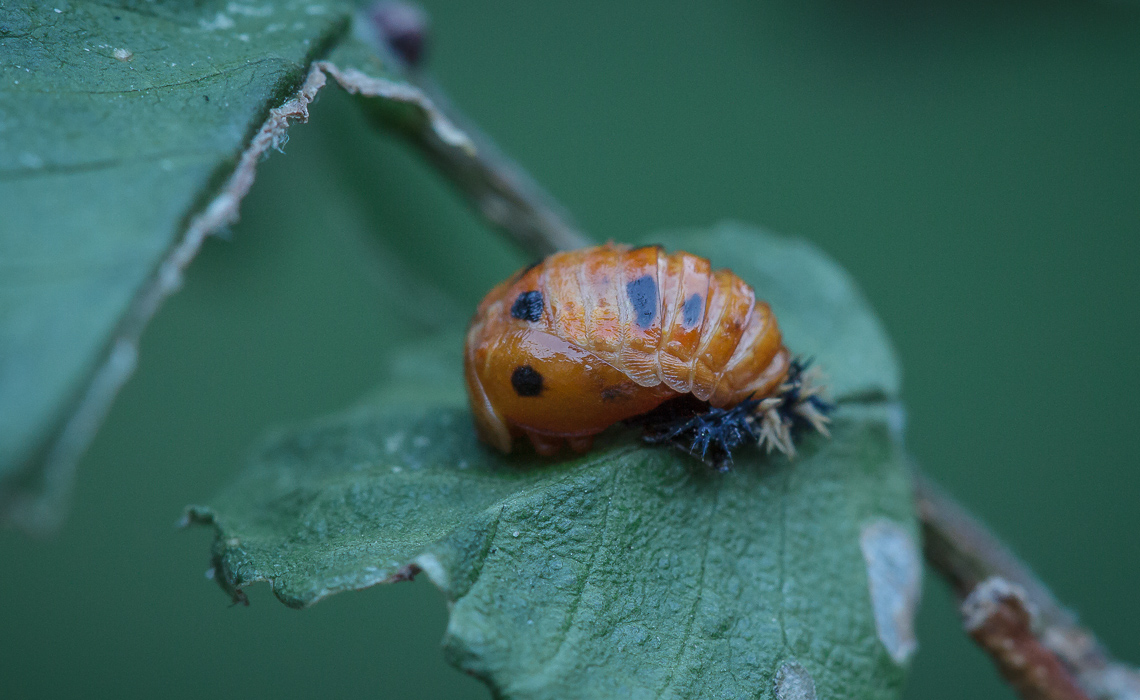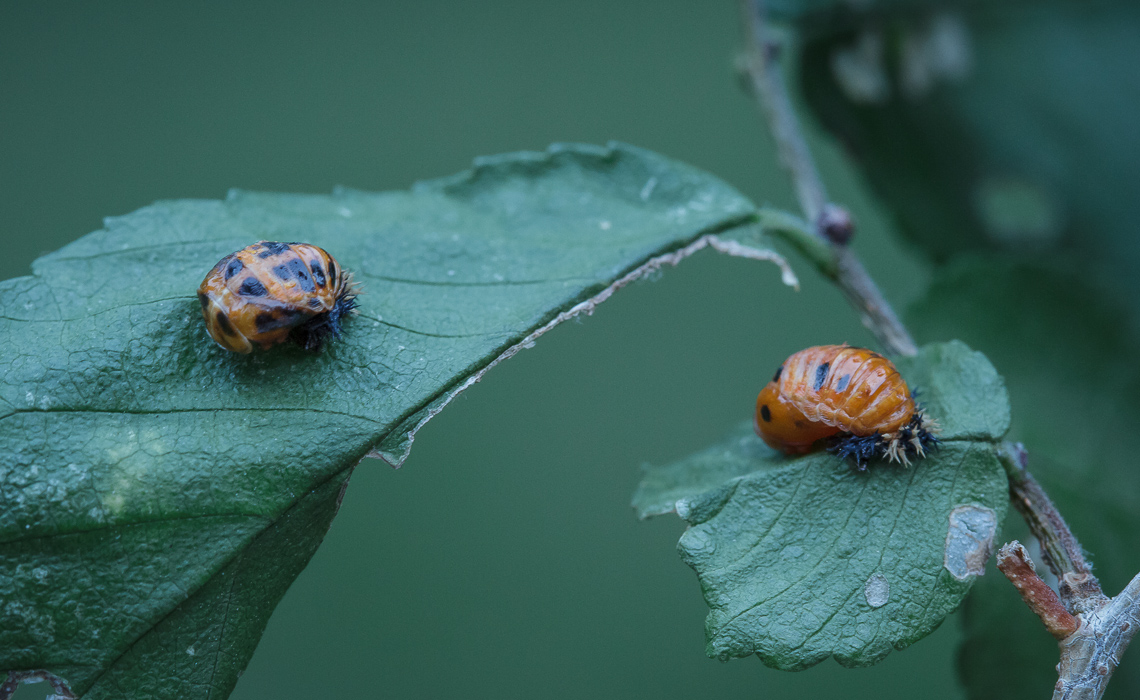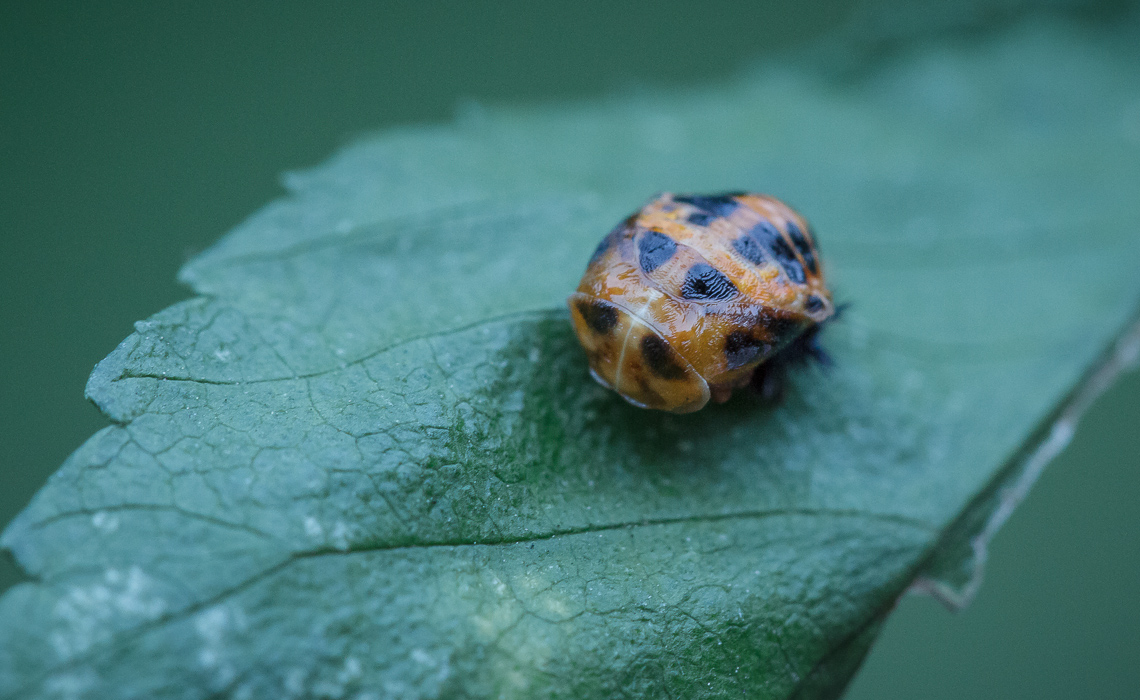Pupating Ladybugs
| 4 imagesThe other day I noticed that the leaves of one of my trees were badly bug-eaten. Small little brown spots covered all of the leaves. When I investigated, I found thousands, if not tens of thousands, of ladybug larvae. While I thought that generally ladybugs were predators of other pests, in this case, it seemed as though they were the pests. Instead of treating the tree, I decided to leave them be. Many of the native species of ladybug in North America have been in decline, even to the point of hardly ever being seen (i.e. nine-spotted ladybug). I couldn’t tell if the larvae were for nine-spotted or the introduced seven-spotted, so I decided to let them live, pupate, and let the adult beetles take care of an aphid problem I have in my ash trees.
A couple days after the original discovery, I found a couple large larvae attached to some leaves, apparently preparing to pupate. I clipped the branch, and dropped it in some water, and I have been watching it for the last couple of days. The average time to pupate for a ladybug is about five days, so hopefully in a couple more days, I’ll have some interesting hatching and elytra hardening photos to go along with these pupa shots.







